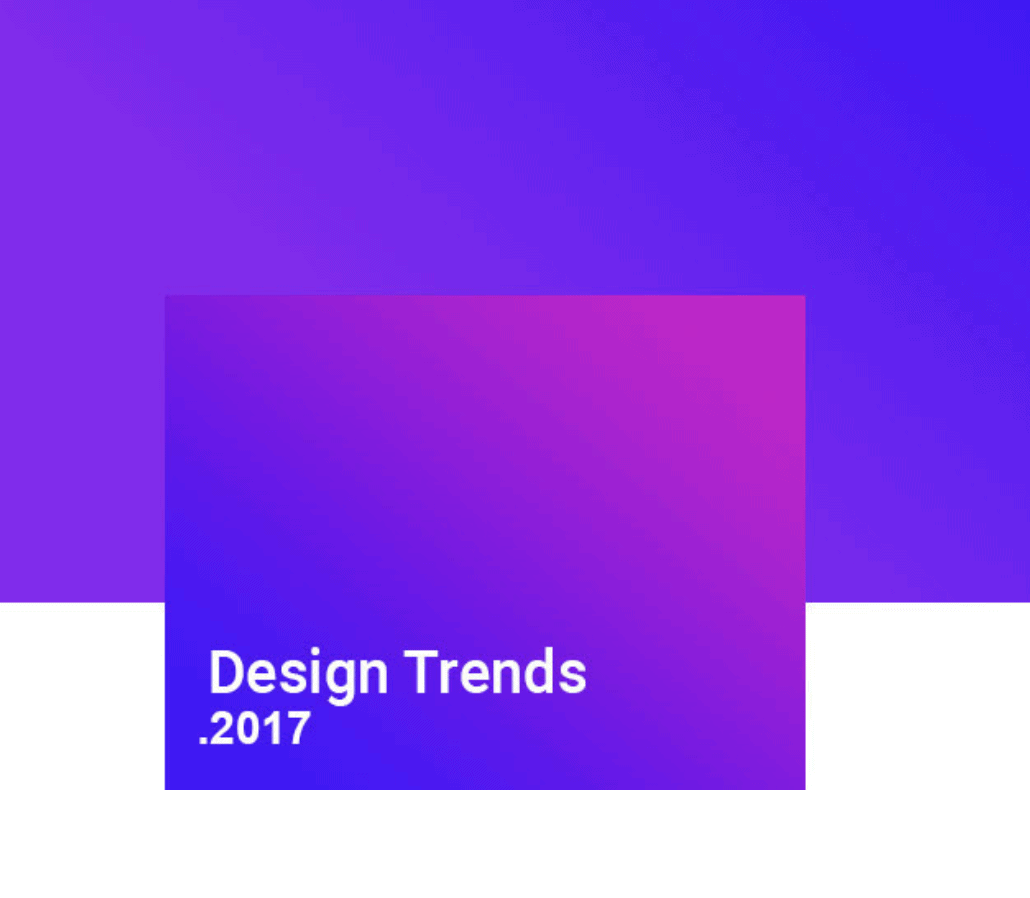Design cycles in the past few years are getting smaller all the time & trends in design language are becoming more ephemeral all the time. Paradoxically, this is also a time where user experiences are getting standardised and room for creativity in user experiences are diminishing. What does 2017 have in store for us?
More products/ websites take the mobile first approach.
The mobile first approach is the process of designing for the mobile screen interface first then working the same design language to bigger screens. What helps in this approach is the restricted real estate a brand has to play with forcing them to do away with content that isn’t necessary & sticking to the main story. This is also important as mobiles are slowly becoming the primary devices for use for users to browse the web overtaking desktops.
Increased animation & micro interactions.
With the proliferation & advancement of html5 & javascript, animation in web design has become an integral part of the user experience. Animations can be of different uses in different scenarios ranging from reducing users interstitial anxiety while loading something to giving feedback on clicks. Animations also form a part of very small interesting interaction with users that create a feel for a web platform. These smaller granular interactions are also known as micro interactions & these will only increase for users on platforms. What these interactions can do is create an experience for a website or brand that becomes its trademark. Eg: The animation on hovering on the like button on facebook showing the rest of the emoji options.
Restricted UX
As more & more users from all backgrounds & demographics are coming on board the internet restricted user experiences are being championed by products and brands. A lot of products following this path simply user experiences and user flows to a point where they have no option but to be constrained to step by step processes from start to finish giving users no secondary choice. By cutting out options & choices, users have no way to get it wrong diminishing bounce rates & user drop offs. Uber is a great example of restricted UX working great. Ask for pickup — get eta — pay driver — rate driver
Rise of the GIF & video
Video is being used more and more in web design over the past few years & my guess is that it will only grow with better internet speeds & video compression options available. Mostly used in backgrounds & accentuating content the right use of gifs & videos takes digital storytelling on your website to a whole new level.
Bold Typography
Good typography has the power to evoke very emotional responses within users. It can set the mood, create a specific tone for the user experience and can push powerful messages across to users. And as screen sizes becoming smaller all the time, it is time for big & bold typography patterns to shine. Paired along with an adequate background image, adequate typography can be used to push impactful brand messages to the user. Eg: Nike, Adidas, Apple.
Illustrations over Stock Imagery
Illustrations are slowly taking over stock imagery as hero components of website. Illustrations can be designed to match brand tones and give them a bit of quirkiness that makes them stand apart from the rest of the crowd. Also, illustrations give the freedom for website developers to animate them or use them as custom imagery for website or both giving websites a common visual tone based solely on them.
Failure mapping
With more and more people getting online mapping user flows & experiences for the ideal user alone is not enough anymore. There is a high chance that more and more users accessing websites and applications are far from ideal(eg: novice & elderly internet users) & user scenarios have to be built to accommodate such users to ensure that brands are ready to handle incorrect usage of products & services.

